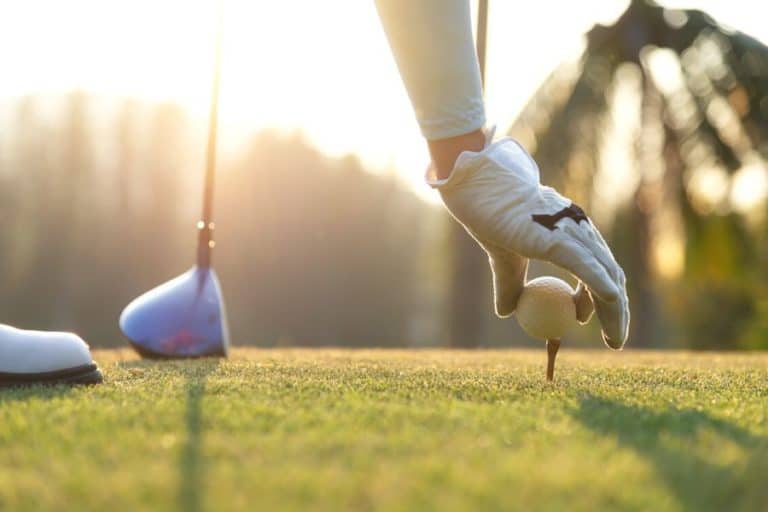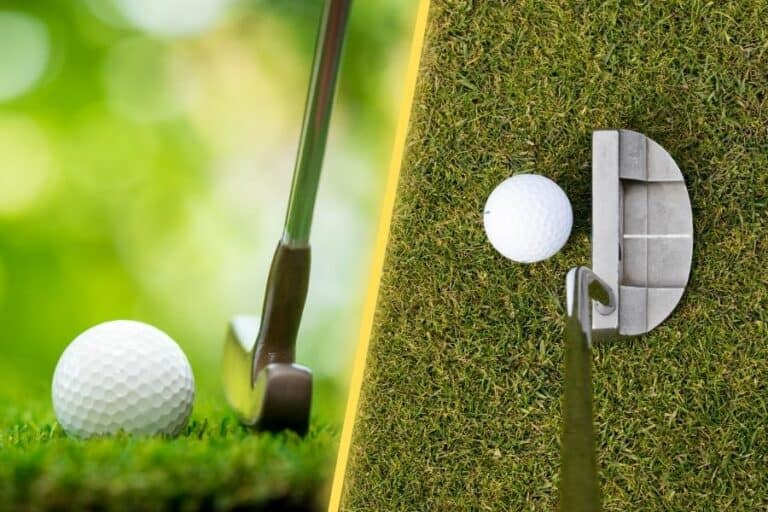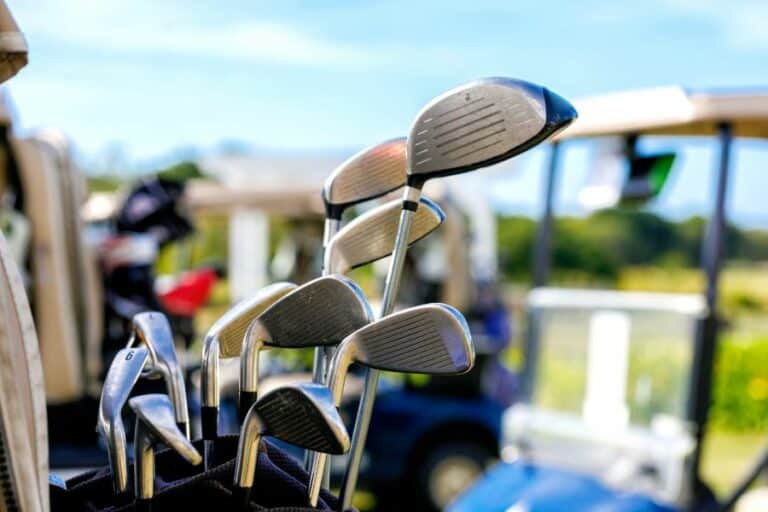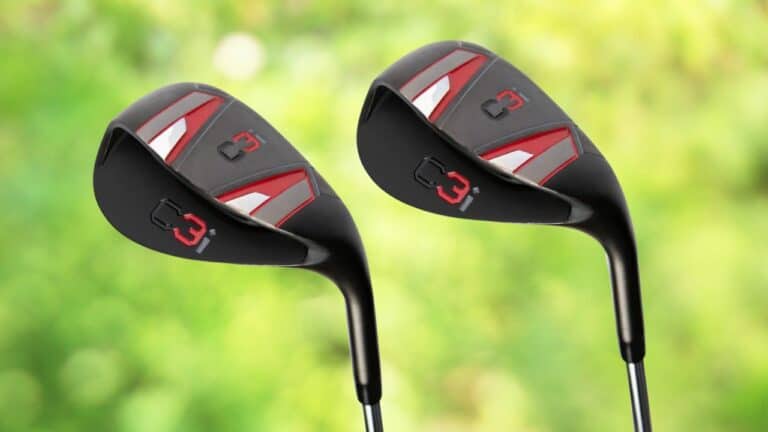Do Golf Balls Go Bad- Surprising Facts About Its Shelf Life
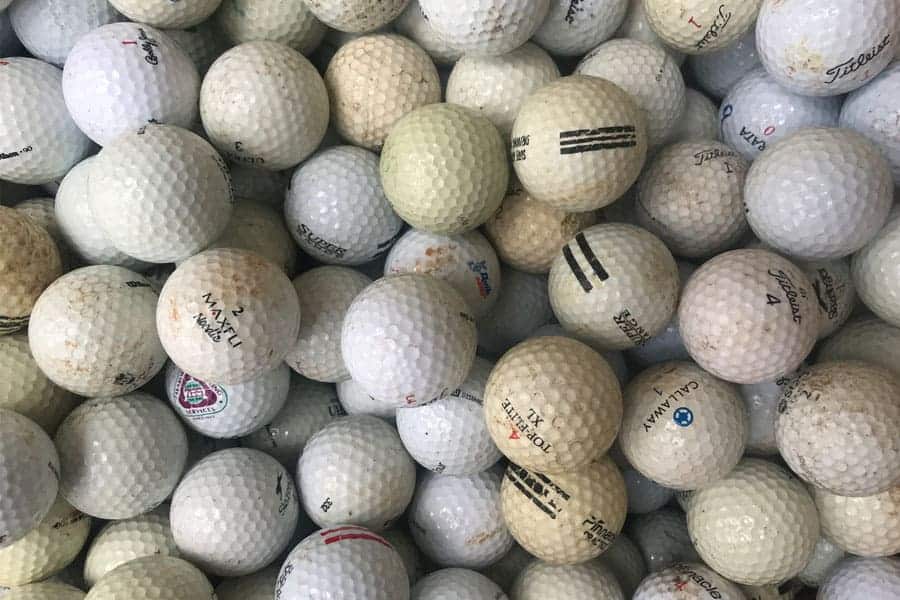
If you have played golf for any length of time, you may have wondered, do golf balls go bad and need to be replaced? This article will explain the answer to this question.
Surprisingly, golf balls can go bad quite fast if not taken care of properly. Most golfers may not be aware that golf balls have a shelf life.
There are many things that may affect the lifespan of a golf ball and lead to its deterioration.
Do used golf balls go bad?
As many golfers prefer to use their balls for numerous rounds, the ball can get damaged after a prolonged period. Thus, if a golf ball is excessively scratched or chipped, it will likely not last as long and be less effective during play.
How many hits can a golf ball take?
Most golf balls are crafted to endure at least 100 impacts from a club head that moves at an astounding 125 miles per hour.
That means a golf ball can last through the swings of 100 shots or approximately seven rounds on a golf course.
Do unused golf balls go bad?
There’s no exact science on the lifespan of a ball. However, with proper care and storage methods, you can extend its longevity.
An unused golf ball can go bad if it has been stored in the wrong conditions for a long time. This could be due to extremes of temperatures, humidity levels, or direct exposure to sunlight.
If you store a new golf ball in ideal conditions – between 70-80 degrees Fahrenheit, it can remain perfectly suitable for play up to a decade later.
According to Titleist golf ball researchers, golf balls kept in a temperate environment can last up to ten years.
When do golf balls go bad?
Most golf balls undergo a gradual decline in performance after being exposed to the elements for a couple of years. The rubber core, which gives the ball its spin and accuracy, will slowly degrade over time.
However, if your golf balls are stored properly and not used often, they could last up to ten years before losing their effectiveness.
Here are some factors that can make your golf ball go bad, eventually leading to suboptimal performance of the ball regarding its distance traveled, spin rate, flight trajectory, and roll:
- Repeated impacts off hard surfaces such as trees or cart paths.
- Continuous usage over an extended period of time.
- Poor storage conditions in your golf bag.
- Exposure to extremely high or low temperatures.
The impact of design and construction on longevity
The design and construction are significant factors affecting a golf ball’s shelf life. So, a golfer must know what are golf balls made of.
Most golf balls are constructed using rubber-based materials, but each golf ball core’s exact composition varies from one brand or model to another.
The modern golf ball has been developed with a solid material that is highly reactive for optimal performance on the green. Most modern golf balls have a two or three-piece construction.
Core
The core is an integral part of the golf ball’s construction. Moreover, understanding the way it is constructed can help you choose a golf ball that can last long.
Modern golf balls’ cores are made with extremely durable polymers that hold their shape for a long duration.
Cover
Golf ball covers are made of either firmer ionomer material or softer urethane.
Urethane is a softer, thinner material designed to be incorporated into 3,4, or 5-piece golf balls, making it more prone to scuffs and scratches.
However, the Ionomer covers are highly resistant, making them the perfect choice for golf balls designed to fly farther.
Brands like Bridgestone e6 and Callaway SuperSoft have taken advantage of this material’s durability.
Moreover, the ionomer is also an excellent option for game improvement due to its ability to withstand even off-center strikes or rough terrains.
Thus, as long as the cover remains unscathed and uncut, any type of cover material will prolong the life span of the golf ball up to seven rounds.
How long does a golf ball last?
Premium golf balls in excellent condition can potentially span up to 7 years or seven 18-hole rounds.
However, it may be essential for players to switch out their ball earlier if any unsavory play has left its mark. Such scuffing is more likely than actual deterioration affecting the golf ball’s core integrity.
Scuffing often happens when the ball is pitched with wedges or because of bunker shots.
This damage can cause you to lose an average of 6 yards.
Can waterlogging impact the durability of a golf ball?
When a golf ball sits in water for 12 hours or more, it will absorb the liquid and suffer permanent damage. Most notably, this can cause its driving distance to decrease significantly.
For instance, submerging a 2-piece ball for just one week beneath the water can cause it to lose up to six yards of carry and roll. Extending the duration underwater up to three months will only add an extra three-yard decrease in performance.
To avoid such deterioration of your equipment, make sure not to leave any golf balls unattended near ponds or other water bodies.
Signs it’s time to change your golf balls
Since golf balls wear out over time, here are some signs that help you identify it might be time to change your golf balls include:
- Test the golf ball’s bounce by gently tossing it on a hard surface. A worn-out golf ball will bounce lower than one still in prime condition.
- Check the appearance of the golf ball. If you spot any deep cuts, marks, or discoloration, then that’s an indication that the golf ball may be worn out. If the dimples are not as visible or deep as they used to be, it is time to change the golf ball.
- Check for signs of moisture or waterlogging, as this would mean the golf ball has been submerged in water for too long.
- Test the travel of your golf ball by using a launch monitor to measure the drive data and compare its performance with a brand-new ball. If it is not similar, it is best to change the golf ball.
- You can also do a float test by dropping the golf ball in salt water. Golf balls that float on top are the good ones, and the ones that sink are the bad ones.
Conclusion
It is highly recommended to regularly inspect your golf balls for wear and tear, as this can indicate that it is time to get a new set. Lastly, store your golf balls away from water and extreme temperatures to ensure the best results.




